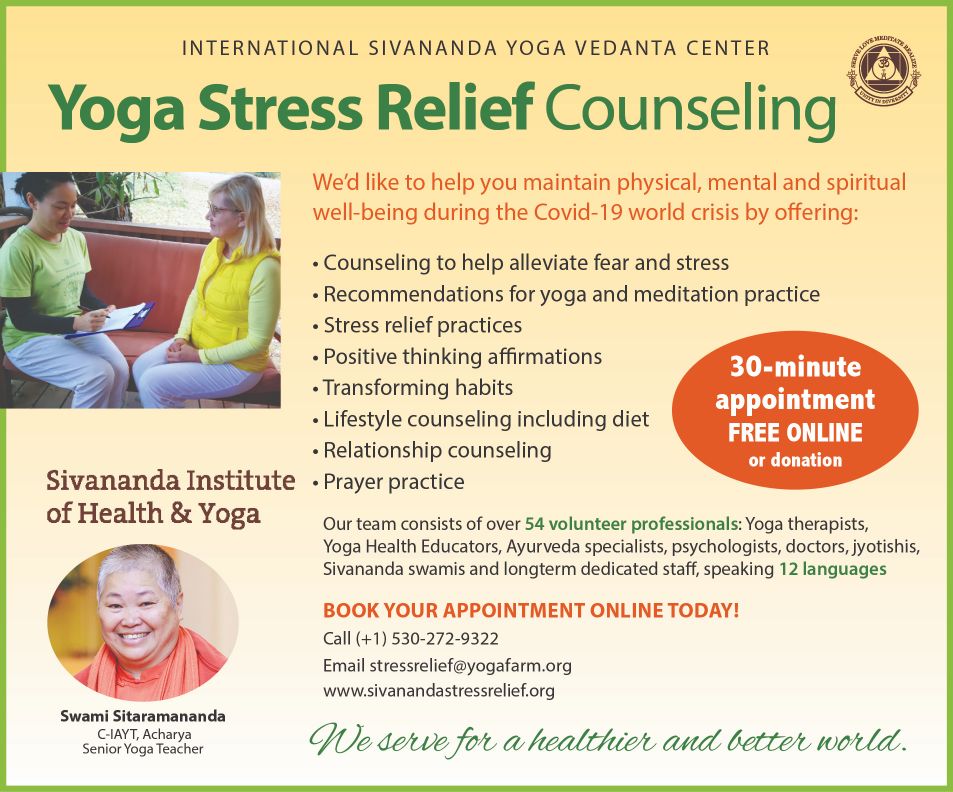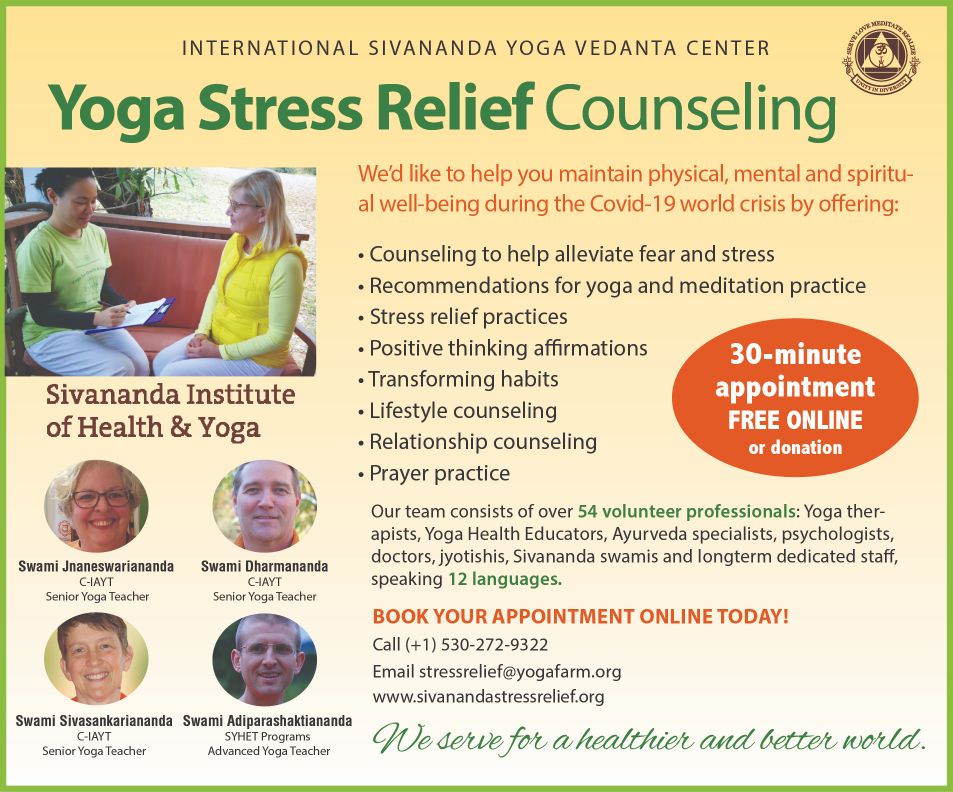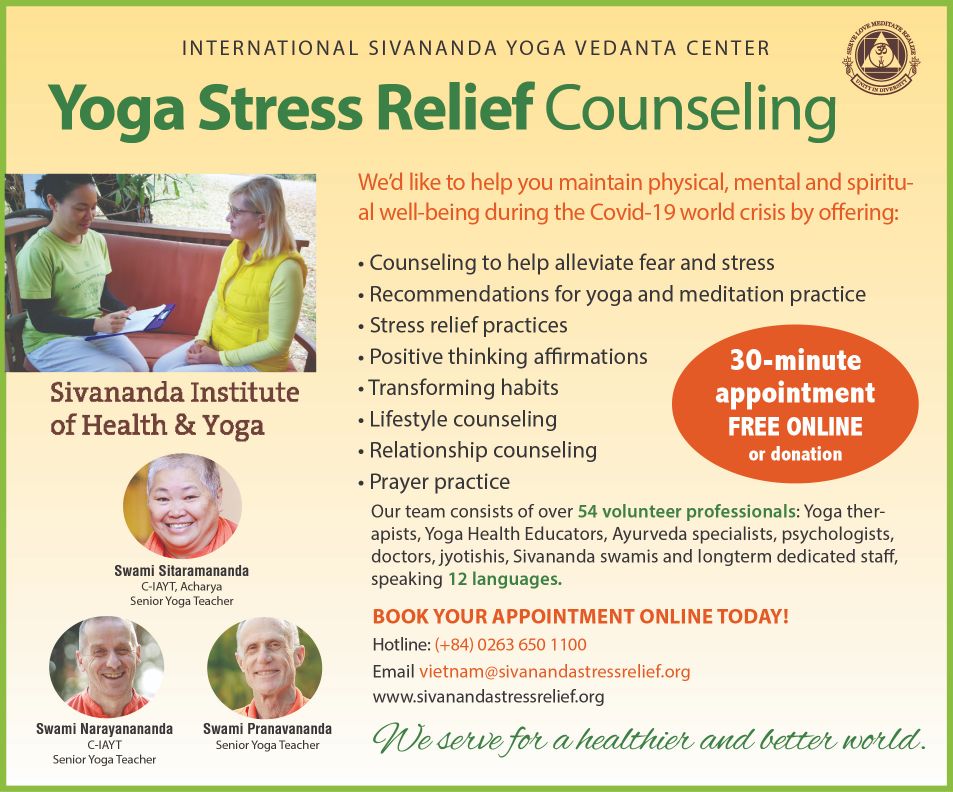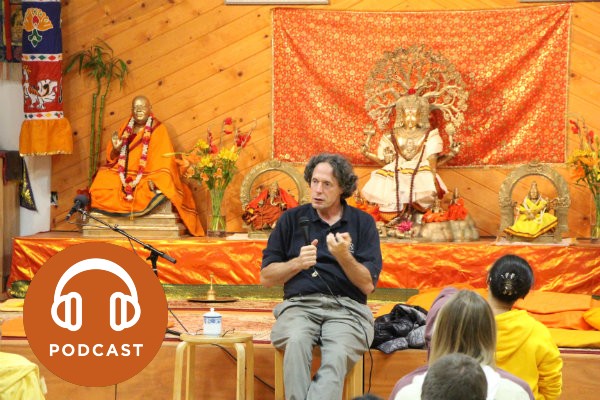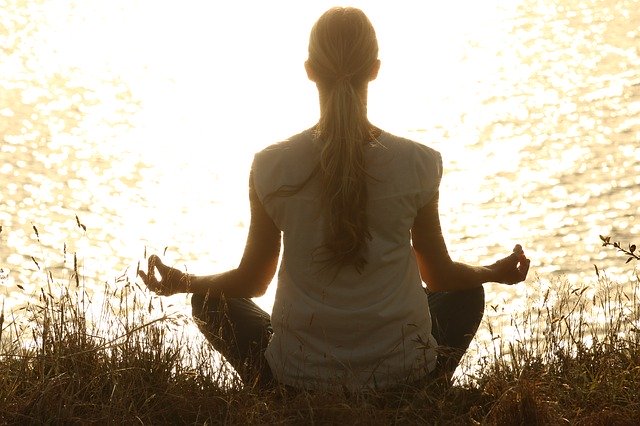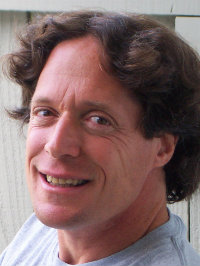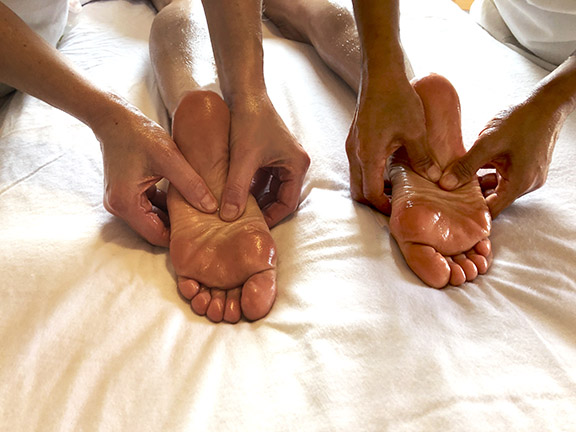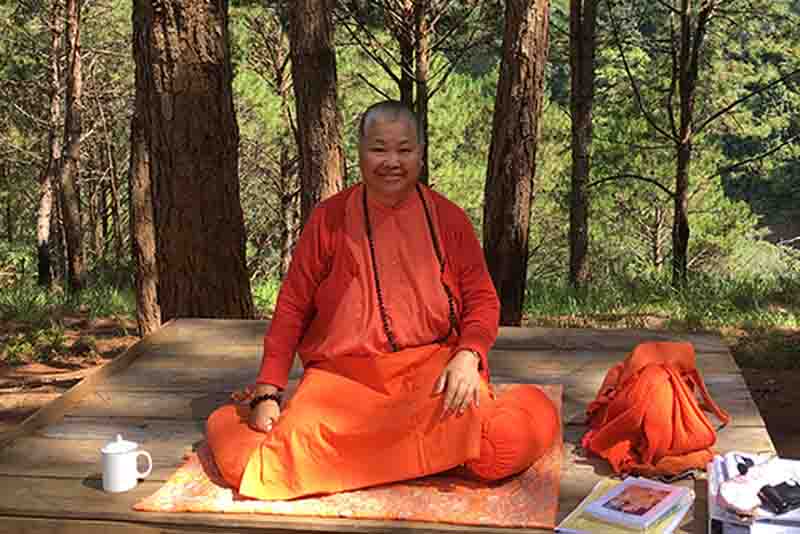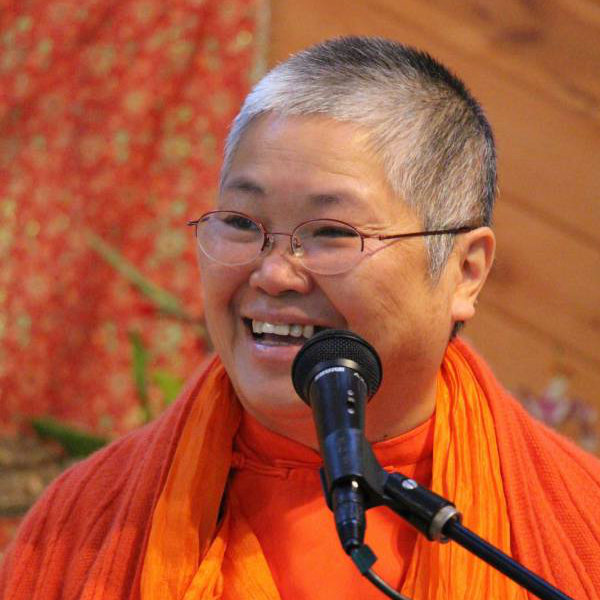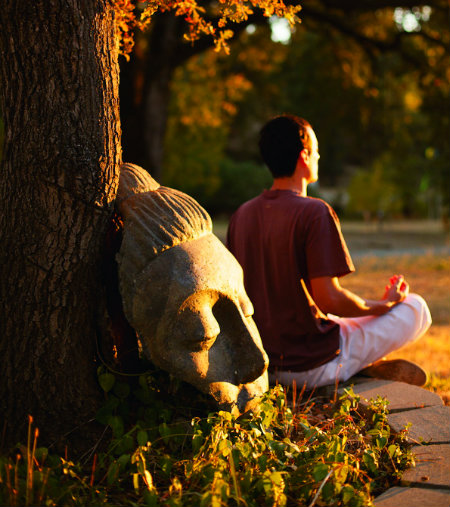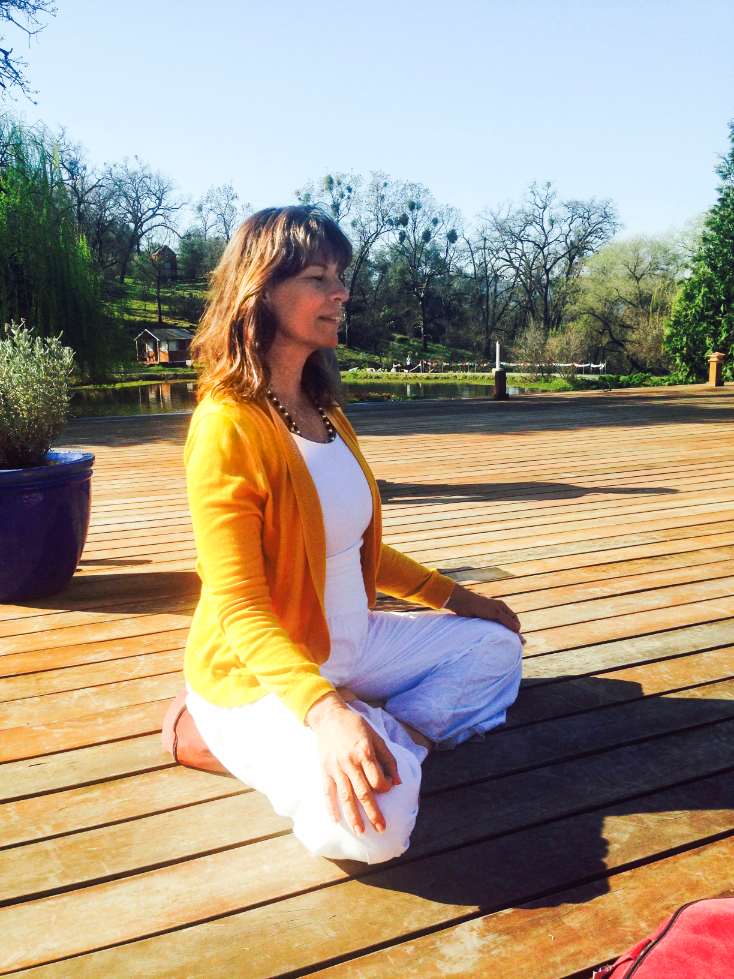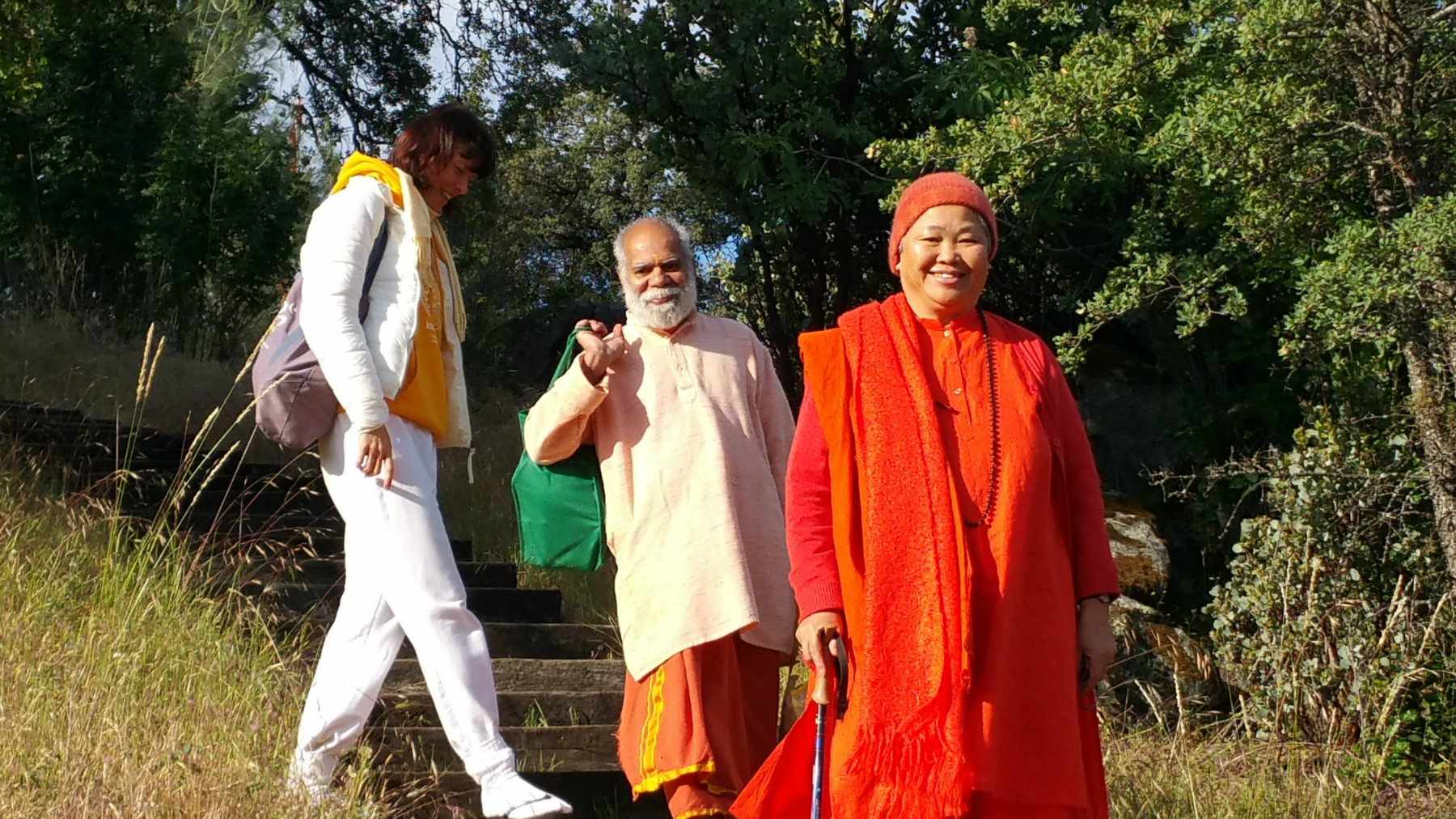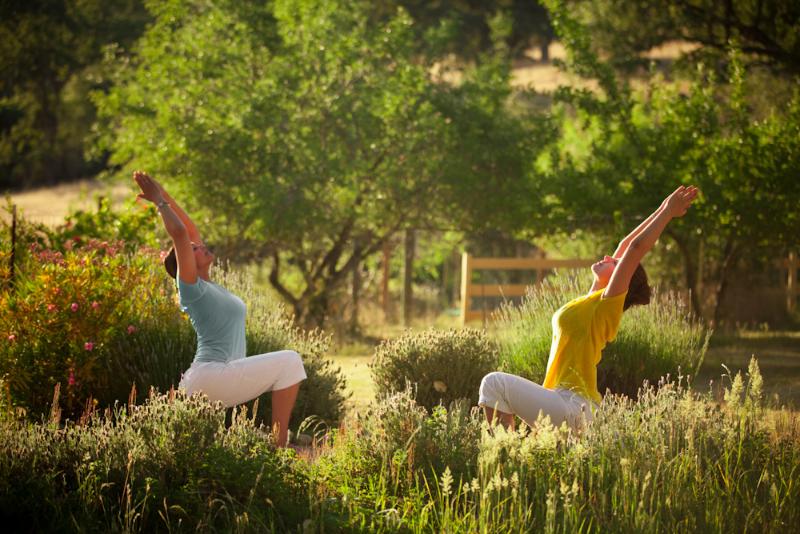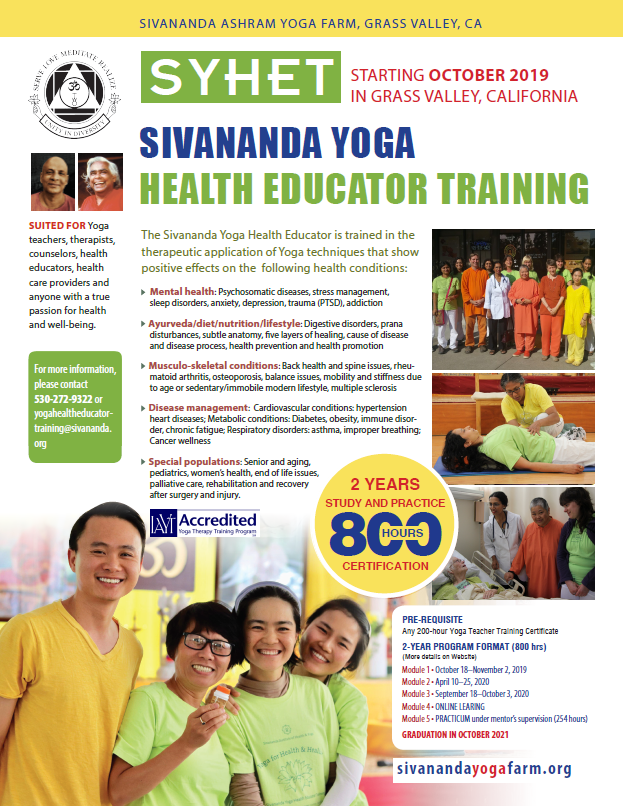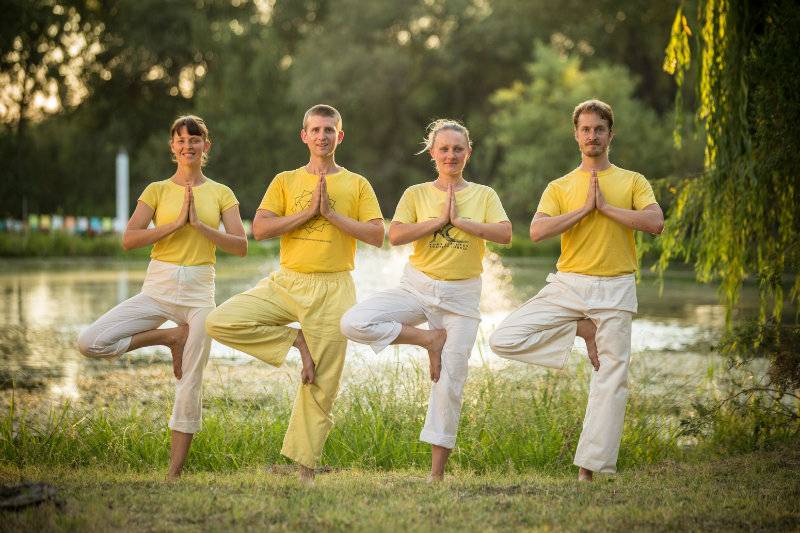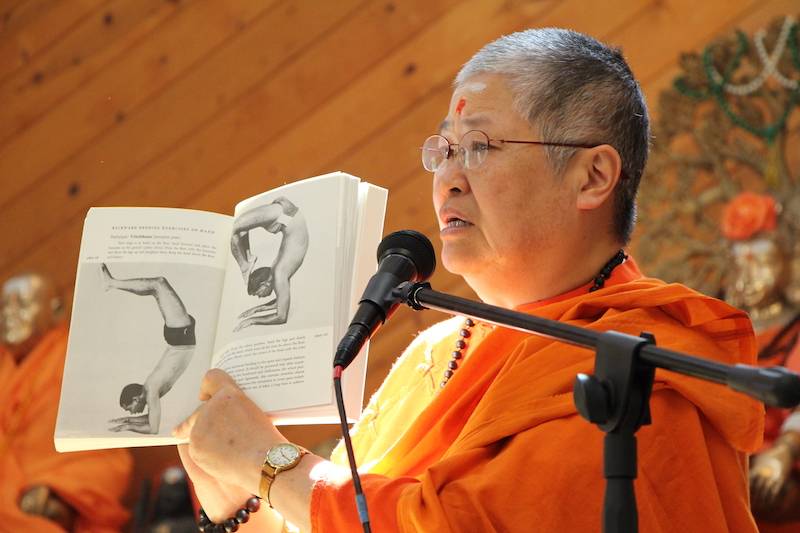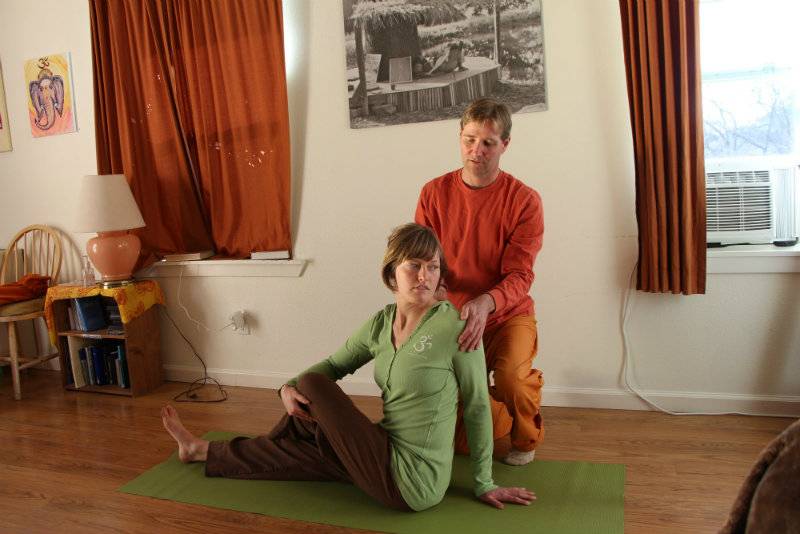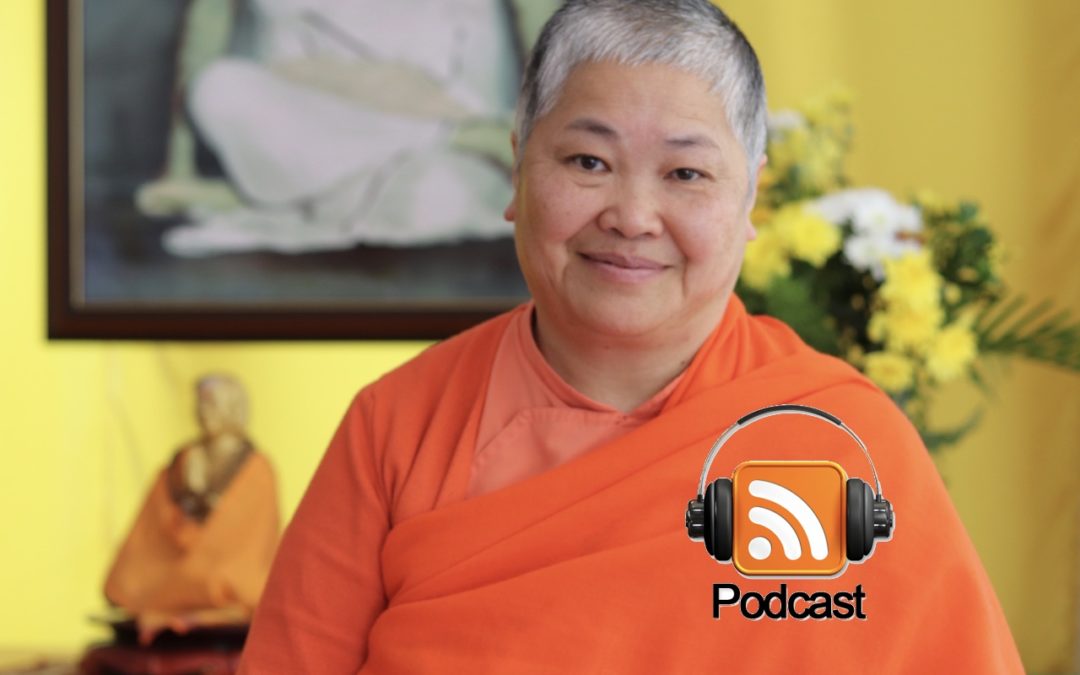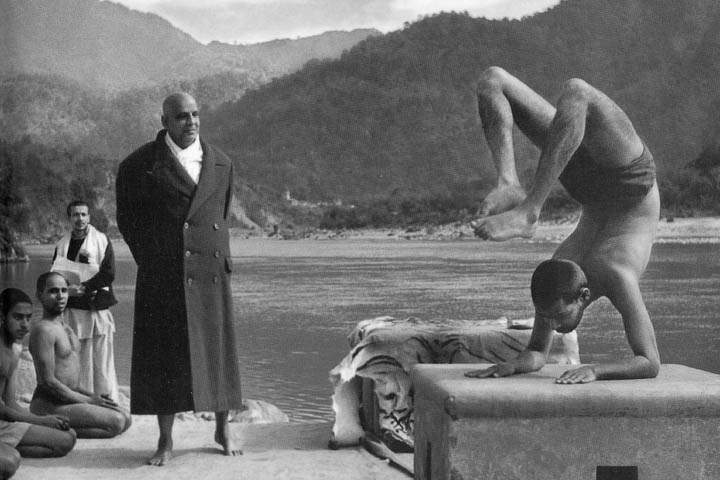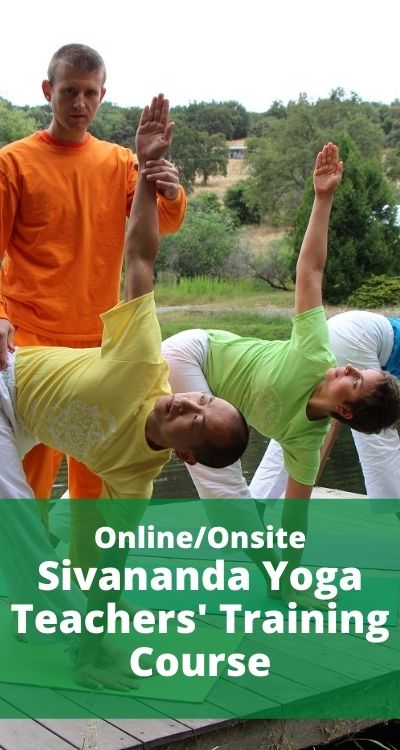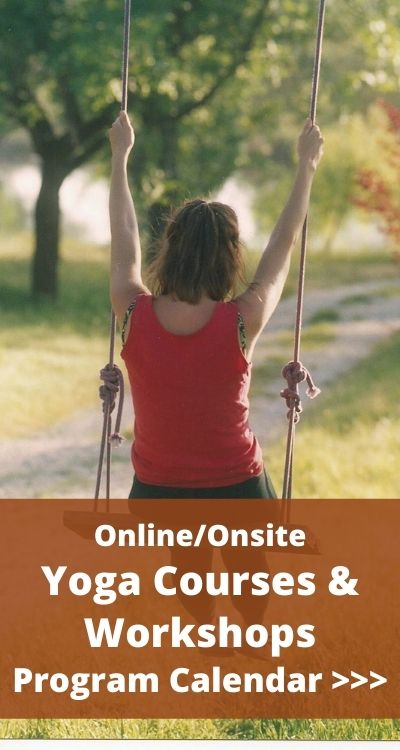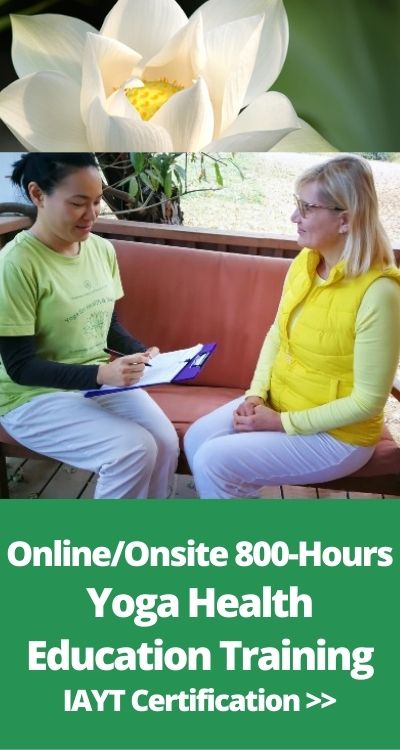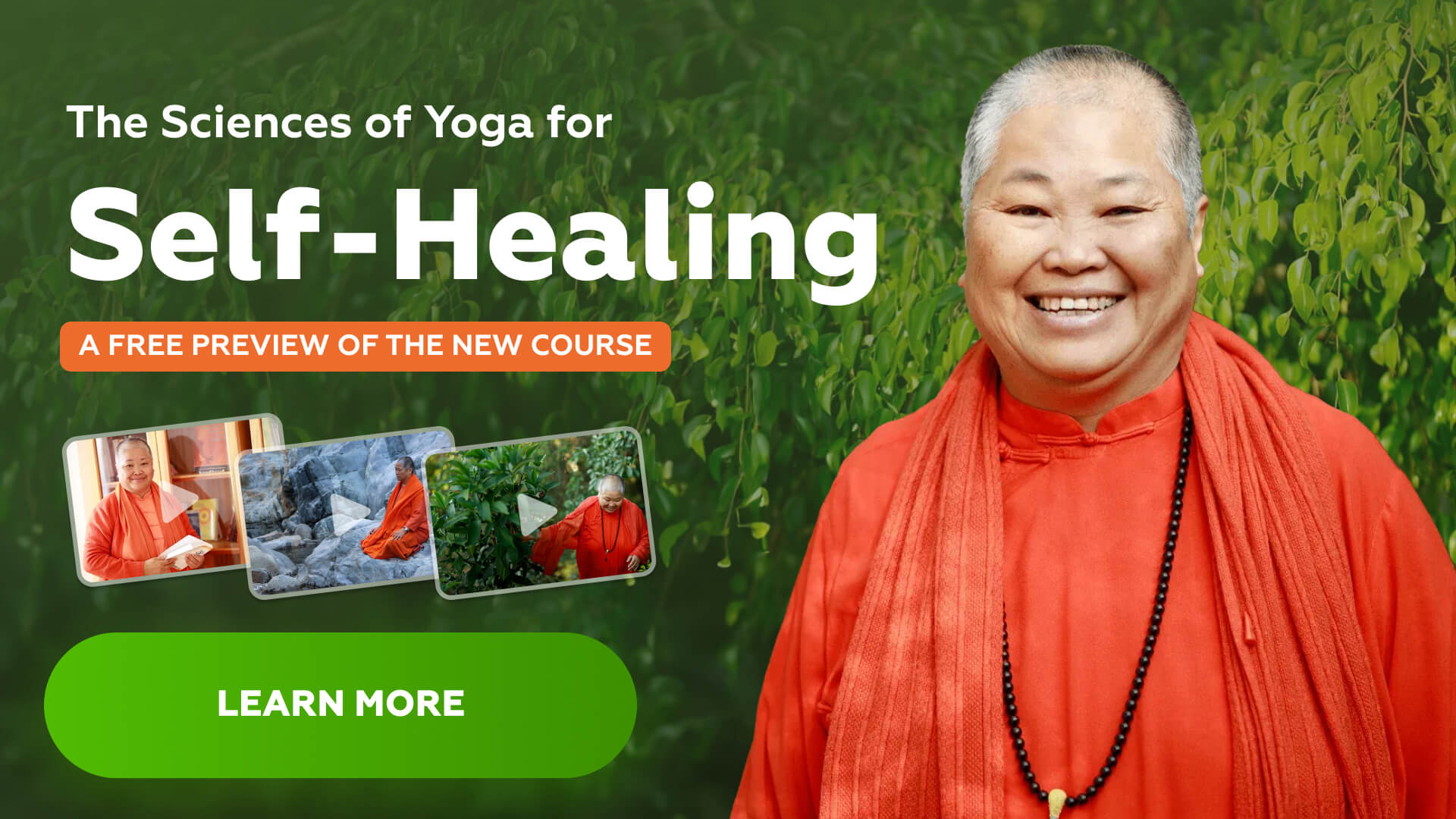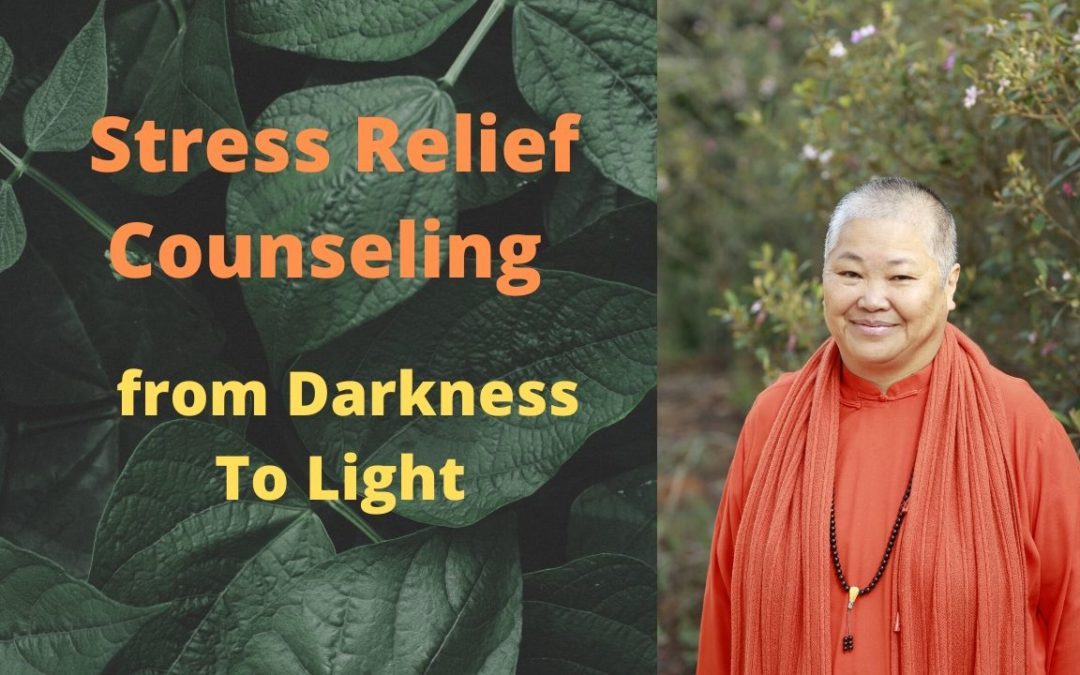
Stress Relief Counseling – from darkness to light
Satsang on line by Swami Sitaramananda April 8, 2020
Introduction
Today’s topic is a very appropriate topic. It’s about stress relief counseling. The International Sivananda Yoga Centers are offering a service of stress relief counseling for all, in 12 languages. So if you see the announcement, please share with as many people as possible. Because the situation of suffering and stress due to the epidemic is a global situation. So we want people to be able to access the counselors who may be able to support them through this period of stress.
You can imagine the situation. There are all kinds of situations but you can summarize everything under the name of stress. From the person that is a frontline worker in the hospital, trying to save people’s lives; to a person caught up in their apartment living with a few people, with their children and unable to move; to a person who worries about the future, about their livelihood; to a person that is sick and struggling, that is doubting himself and in fear of death; to a person that is separated from the family member, because that family member is in isolation. So many difficult situations that the world is going through. A very very stressful situation that the world is going through.
So we’d like to have more and more people understand stress so that you can help yourself and you can help others as well. Because if you don’t understand the stress phenomenon then you might aggravate your situation through a wrong kind of stress response. The problem is also that you have adapted to stress. This means that your body and your mind may take that as the real thing and lead to chronic stress. And if you are in that stressful situation you don’t really know how to get out of it. The body, the mind will adapt to that kind of stressful situation and response that is physiological, neurological, and that also affects your immunity. At that time, it is just a matter of time that the wrong stress response will perpetuate. Because we are not just talking about now only, but we are talking about the mind. When the mind learns something, it would keep keep repeating the patterns.
The topic is so relevant because it is not just addressing the problems now, but can also help prevent problems that could occur in the future. When the stress has become numbing, and is not something that you can balance out, it can become a mental health issues. As you know in yoga, we want people to become balanced and clear, because that is how they connect with themselves.
Most of the reason for doctor’s visits are caused by stress. Even before the health crisis was here, more and more people are suffering from stress. We can trace many of our diseases back to stress. Our immune system is weakened by stress. So we are more susceptible to diseases and viruses of different kinds, and we have less capacity to fight them.
Often we are not eating properly. Either we are eating too much or not eating at all or eating anything. We are not aware of our eating and diet. We are not sleeping properly. So many people suffer from insomnia or from nightmares or even agitated sleep. We are not breathing properly. Either we hold our breath in tension, or we are trying to gasp air. The reason is that we have become fixated on the idea that disease causes breathing difficulty. It is said that if we gasp for air, it’s because we don’t know how to breathe or how to use our diaphragm to breathe deeply, calmly, slowly and in a relaxed way. Thus we aggravate our problems. Let’s say you feel panicky because you feel that you have some kind of disease and you start to breathe wrongly. At that time it’s very important for you to get in touch with a yoga teacher who can teach you how to breathe through the diaphragm and breathe slowly and deeply in order for you to relax. We are stressed and we want to relax. However, we breathe wrongly, so it makes us experience even more stress.
The situation of stress causes us to have difficulties in relationships with people., resulting in all the symptoms, including fear, anxiety, if we can recognize them, also irritability, grief, sadness or even depression. We have talked about this before, so please refer back to some of the teachings in the blog that talk about fear, anxiety and another one that talks about yoga of relationships, and how we can take the opportunity of this time to improve our relationships. We need this help so that we know how to deal with stress and how to help others.
The other point in this talk is about learning how to observe ourselves and the environment and have a strategy to know how to lift ourselves up and to change the environment for the better. That means how to move from darkness to light. We have to understand the theories about the three Gunas- the very fundamental theory of yoga philosophy. How to move from darkness to light then eventually to a place of transcendence or understanding. You cannot really understand anything if you are in darkness. That is the topic of today.
What is stress?
First we will talk very briefly about stress, What is stress? Our stress response is something that is built-in. It’s in our system. In our psychology, nervous system, and in our immune system. All these are all connected together. It’s a mechanism that responds to the perceived threat to our survival. So the stress response is there so that we can protect ourselves in some way. Later on we will talk about a little more how we can protect ourselves and what the cause of stress really is.
- The mind and the body is very tightly connected. Whatever that we perceive in our mind will affect our body and the body organs and their functions. So we can develop so-called psychosomatic disease due to stress.
- There are three different types of stress response, fight, flight and freeze. It depends on the personality. Fight, flight or freeze, but it’s all the same. It depends on the temperament of the person. Some people may have more tendencies to fight when they feel stressed or to control. Some people might have the tendencies to escape the problems. And the other person might have the tendency to try to disappear so that nobody notice. They freeze, become paralyzed, becoming smaller and smaller.These are the three typical types of response to stressful situations depending upon your constitution and personality.
- You can say that according to ayurveda there are three kinds of personality, the fiery personality (pita), the airy personality (vata), and the more water and earth personality (kapha). So you can say the fight response is for the pitta, the fiery nature. The flight response is more for the vata kind of nature, namely running away. The kapha people will have the tendencies to become inert. it’s just a very rough explanation.
- If the stress response is prolonged then it will lead to chronic stress and eventually to disease and break-down. Normally we have the relaxation response built into our system. It’s alternate. You can be stressed and you relax. Stressed and relaxed. Sometimes it is impaired, because sometimes you are stressed, stressed, stressed, keep holding the stress and responding to stress and you can never relax. So very important that you learn to relax.
- The most important thing to understand about stress is that stress is subjective. Something that might stress somebody else might not stress you, or vice versa. It’s subjective, it depends on your mind. An objective stressor, is something that causes your stress, but your personal reaction is due to the habitual thoughts and emotions in your mind depending on your perceptions. It’s your personal way and habitual way.
So the teaching of yoga will help you change your perception. People think wrongly that your ego self is always the same. That is denying the fundamental essence of life, that we are constantly evolving and constantly changing. Every challenge is an opportunity for us to evolve a little. That means to let go the preconceived ideas about ourselves and about others and to get ourselves out to the light a little more.
- The more we are rigid the more stressed we are. The more we are open and flexible, the less we are stressed. The general guideline is to try to be open and to be more relaxed. Most people believe it’s an external stressful situation that causes stress. But you can see now you are in quarantine, some people think it’s very stressful because they cannot do what they like. But some people will be welcoming it because they have time to do what they like and to do what they need to do. Because normally they can not. We think that everyone will be reacting in the same way as us but it’s not true. Everyone reacts differently. The outside environment is the same but the reaction is different.
How we perceive an event place a significant role in whether the stressor triggers our stress response or not.
5 causes of stress and how yoga helps:
1. Lack of prana (vital energy) from nature:
People are more stressed when they don’t have prana to deal with the challenge. To think or to understand we need prana, the vital energy. But when the lifestyle is too artificial we tend to spend prana. We are in the economy of debt, so that we all the time spend but we don’t take time to recharge. At that time we won’t be able to deal with stress or challenges because we are already in debt. At that time we might go into bankruptcy. We might feel sick when a thought comes. Like I’ve said, it’s a perceived threat. A thought just comes and suddenly you collapse, because you do not have enough prana due to your lifestyle from before. So the pressure builds up and we cannot handle it, our immune system is compromised. We can imagine that our modern world is very much so. It’s making us more in debt. It doesn’t enrich us. We live in high-rise buildings. We are all the time in the car or in the traffic. We are subject all the time to noise, to pollution and our mind is also very much full of thoughts and desires, so we call it the rajastic lifestyle. We overuse the computer, the cellphone. We don’t eat food properly, we don’t take time to eat, we eat out and we eat frozen food. Of course in the situation that we are now in, we can’t really find our proper supply and that can also add to the question of prana. We have to do the best we can in the current situation. Try to understand that we can supply our prana in certain different ways. From foods and also from our proper thinking. The idea is you need to live in alignment with nature to have more prana, so be in the sun and eat the food that is closer to the sun. We don’t go too much into this part about prana because we have a separate talk about that. Just know that when you counsel people about stress or when you feel stressful you can recognize right away that you are lacking prana. So you are not responding correctly, and you will have to build up prana. There are many different ways to build up the prana according to yoga.
2. Negative emotions create stress:
There are some negative emotions within you or within the person that you counsel or people that are around you that are stressful. You can tell right away there are some negative emotions.
Any unhealthy relationships and expectations will create stress. We have a lot stress due to relationships. Our relationships are not necessary healthy or loving, so we have to understand or help people to understand the emotions and the antidote of the emotions. There is some training possible we can learn and other people can learn. So don’t take the emotions as yourself. The first thing is recognizing and developing the awareness of our emotions. The awareness itself helps. The moment that you know that I’m angry, because I feel let down I don’t get what I want. The moment you know that and automatically by being aware of that, you do not become attached to that thinking or that scenario, and can be yourself. Awareness allows detachment. That awareness already helps to alleviate the problems, so when you are counseling people, you help people to be aware. You don’t have to solve their problems, but just because they become aware of it, automatically, their mind will think correctly and the problems will be solved by themselves. Negative emotions will also drain the prana. So that’s why people go down and down. The negative emotions can also be how people think they are. Because they have been building the personality for a very long time. Like I said, different stress responses vary according to different personalities. A person may be very fiery or might be all the time controlling. The person might be all the time not facing situations and not facing themselves. They distract themselves. They escape. A person might be acting as if they don’t know and not doing anything, because they are used to being fearful and stressed. Sometimes you can live in an abusive family relationship, for example, that makes you feel all the time, since your childhood, maybe unworthy, victimized and powerless. It’s not that simple to help a person to get out of stressful situations. Because the roots can be very deep in the psyche of a person. Yoga helps you to open the heart so then you can become more in touch with the love within you. Everyone has love, but the habitual negative emotions might be veiling you from the love that is true and within you. Yoga makes us open our heart and withhold our judgement of others. We are very quick to judge others and close our heart. But by practicing yoga, we can keep our heart open. Yoga also helps you deal with your emotions by reminding you of your true Self that is untouched and unhurt; that is fulfilled; that is perfect; that is independent; that is transcendent; that is free and joyous; that is non-competitive; that is one without a second. Beautifully said. One without a second. That means when you don’t feel separated from the others, at that time you can go to the essence of yourself that is one. And automatically all your negative emotions vanish. Of course it’s easy to say but it’s something we have to keep working on. We need to identify the negative emotions and use yoga techniques to take care of them.
3. Adaptation problem:
The third cause of stress, which is very relevant now is the adaptability question. We said already, the more you are open and flexible the less stress you will experience. The more you are rigid the more stress you will have. We need to adapt. We need to let go of ownership. Ownership means you identify very much with something, either objects or accomplishments. You have difficulties to adapt because you falsely identify with something that is impermanent. It’s a very big thing. Swami Sivananda says, ”Adapt, adjust, accommodate. Bear insult, bear injury, highest yoga.” That’s how Swami Sivananda talks. We need to step back. When you feel something is difficult, you need to step back. Practice detachment. Stepping back from whom? From our own selves. Our own ideas and identification about whatever we feel, whatever we identify with as the problems, or whatever we identify to be the cause of our miseries. So we need to detach. Step back. Stress happens when there’s a failure of adaptation. When we fail to adapt, it’s because we are attached. Instead of detachment, we attach to something. We attach to who and what we think we are. We attach to our problems or how things should be in relation to who you think you are. The attachment problem is the misidentification. We think or experience something and we might be attached to it. We attach to our past. We attach to our stories. We attach to our dramas. That creates stress. Or when things change we become stressed. You see nowadays things change so quickly, and we are stressed. That’s everybody. Unless you are really trained for a very long time, and you have to be really flexible. When things change we become stressed. When we cannot adapt to new situations and when we are constantly expecting things to be in conformity to our expectations, we are not able to adapt ourselves to them. So yoga says, “ A flexible spine, a flexible mind. “ All the time we are training ourselves to be more flexible in our body and also in the mind.
4. Uncertainty and existential anxiety:
How Yoga helps to alleviate stress by giving us flexibility in outlook about Self and others:
The common problem for our time that causes stress, and the reason why so many people are stressed now, is the idea of uncertainty. Uncertainty and existential anxiety resulting from the fact that you see many people dying around and the disease may come to your door at any time by any body, and in that it’s invisible. At that time you have anxiety. It comes from the fear of death and from disease. When you are there and your life depends on the government that decides if you can move or go back to work or so on, that creates stress. Then we face something we call uncertainty. That creates stress. When you study yoga you have to go deeper. It’s not only about yoga exercise, but you have to go deeper into the philosophy of yoga. Because it helps you to alleviate the stress and give you flexibility of outlook about ourselves and others. Uncertainty has always been there, it’s not a new situation. We don’t really know what can happen. We don’t know when we are going to die. We don’t know. Anything can happen. Earthquakes can happen. Tsunamis can happen. Accidents can happen. So nobody really can predict or control life. We have an illusion that we can control until something happens and we realize that we are not at all in control. So we need to learn how to live this life which is constantly changing. Changing day by day. Even the body is constantly changing. My white hair did not come overnight. It came little by little. The body is constantly changing and we are facing the transition. That creates a lot of anxiety. Because we see people dying and we see more and more which reminds us how fragile life is. We can be taken very very quickly. We turn around and somebody can be taken very quickly. You look at the statistic today, so many people are dying. It’s not like before people didn’t die but now it becomes very clear. So we have to think more about it. Existential anxiety exists all the time, and we have to resort to some kind of deep realization, deep understanding or deep thinking, in order for us to be able to be stable in ourselves.
We have to learn to see the absolute. The level of ourselves which is untouched. At the same time we have to be able to live in this world of relativity, at the same time remembering a level of ourselves is immortal and untouched. The yogi develops the capacity to be flexible and to be able to change perspective about him or herself, and to avoid obsession and stubbornness. To try to depersonalize things. Don’t think it only happened to you and dramatize it, but try to understand the reason, that can be quite involved, for any kind of stressful situation. We can very quickly deal with our existential anxiety if we have some kind of faith. You know in a correct manner it’s not blind faith but faith in a correct manner, faith in your true Self and in the supreme intelligence. The more we have faith the more we can deal with our existential anxiety and our uncertainty. Because we don’t know, and we cannot control. But everything is always happening for the best. So you can relax. We know we are supported at all time by the invisible hands of the divine. That is also something we can train ourselves into thinking. The practice of yoga helps to connect to the Divine. And if you remember there’s that level of the soul that is sat-cit-ananda, the Atman. That is free, that is not hurt, and is untouched by anybody and that whatever people think about you, you are perfect. So there’s that level of ourselves that we need to get in touch with. Otherwise we will be very anxious and fearful. You see there’s already many reasons why we are stressed and we can’t escape it. We have to think about it. The challenging situation is that we have to think about it more. Now we say okay when we have time we will think about it, when everything comes back to normal we can think about philosophy. But that’s not correct. It’s in the challenging time that you need to take the opportunity for wisdom.
5. How Yoga helps redeeming karma:
It’s more or less the same idea that nothing happens for nothing. Something happens always for us to have the opportunity to learn something. What we are experiencing now is the results of our past actions. And what we need to do now to redeem our karma is to see it, accept it and redeem it and not repeat the same wrong thinking again. It is said that we are born to experience the results of our past karma, past thoughts, past desires and these are our lessons. So this is why to some level, our problems and our challenges are inevitable. What does that mean, inevitable for us? That means that whatever happens to us is specific for us. We need to learn our lessons and cannot escape from it. You can blame people and try to deny it. But unless you do some soul searching, and see your own weakness and your repetitive patterns, you would not be able to learn that karmic lessons. It’s said that we are born and our life is set up. It’s all set up. So that we can experience it. And sometimes we think think that somebody set that up. You look at the recent events and you can see. Some people get stuck in some countries they cannot move they cannot go, suddenly they cannot. You see all these are all karma. You step back and see why is it so. You step back and see this is why you need to accept. It’s not that you are fatalistic about it, but you need to face it and make the best out of it. Because it has in it something, a lesson about ourselves. Not the neighbor not the others not our family members but exactly something we need to learn. The same situations and a group of people will experience things differently, will react differently. Because of their patterns. And they need to learn from their patterns. That is called the deep level of karma. That’s why it’s very annoying. When something that we think should not be there is there again, right in front of us, and we think it’s very stressful. So the deeper level of stress is that situation. Everyone has to go through their karma. The karma can be collective karma as well. So we are all together on the planet of earth in this time. So whatever we do to the environment whatever we think it’s civilization and we develop dependency towards technology and our life changes quickly. It’s karma. I myself don’t want to deal with any of these. The cellphone, the internet. But now I found myself on the internet, have meetings on the internet and all these things you know. I studied it’s difficult for the eyes burn your eyes and it drains your prana. I remember the first time I talked in the meeting on the internet or something I feel very drained. Because my world was different I didn’t know the internet I didn’t want to use the internet before. I never used these things. But the whole community the whole life everything the whole world is moving towards that level. And now I have got used to it. So now it’s not so draining. Because somehow we develop a different kind of nervous system. So the whole world is evolving very quickly and who knows what the situation now is preparing us for. We go back to the question of karma and stress. We can share together the collective situation and bear together the results of our collective actions.
So to summarize, stress is an indicator and a teacher that we need to think about a given situation to rethink who we are, about our expectations and our motivation and to remember this is not the real Self. We need to try to lift our consciousness through teaching, through training so that we go to the root cause of the stress. So as a yoga teacher you have to be humble, knowing that you do not know and surrender your will to God’s will. And Yoga life teaches you the different practices that combine the four paths of yoga to destroy the root of karma that comes from wrong thinking and wrong doing, and to give us the positive and sattvic life, that’s the teaching of the Sivananda system, “ Serve, love, give, purify, meditate, realize. “ the four paths of yoga. That’s the first part of the talk today about stress and the cause of stress. So that you can counsel yourself and counsel the people around you.
The 3 Gunas ( 3 qualities of nature)
Another theory that comes from the yoga philosophy that will help you is the theory of the three gunas. Now we are talking about the theory of the three gunas as the guideline for us to move from darkness to light or to help people move from darkness to light. Regarding the the topic of stress, there are three types of reaction, depending on the gunas. The gunas are tamas, rajas and sattva. These are the Sanskrit terms that explain how the whole universe and nature can be seen and characterized through all these qualities. There is the quality of darkness, tamas; the quality of action and movement is rajas; and the quality of purity and balance is sattva. If you yourself can try to recognize within yourself the qualities and try to recognize the qualities in the person that you counsel as well, if you can really master the way of seeing then you will know how to do, how to counsel a person. The guideline is that people will respond to stress depending on the gunas, so they can have a tamasic response to stress, a rajasic response to stress and a sattvic response to stress. The counselor yourself has to help the other person to move from tamas to rajas and to sattva.That is the key, the main guideline to whatever problems we find in ourselves or we find in others. You will have to break through the tamas, the darkness; calm down the rajas, the agitation and the projection. You would have to cultivate the sattva which is nourishing the quality of balance harmony nourish and balance. That is the main guideline.
But before that we can just try to see a little bit the concrete manners how a tamasic stress response can look like.
Tamasic stress response:
When a person is lazy, slothful, they don’t care. They don’t take baths and even throw the clothings all over, and the room, the house is completely disorganized. They don’t clean and they don’t organize, that is called the tamasic response. That can also come as a stress response. “I don’t see anything, I don’t find a way out, I don’t understand anything anyway, so I don’t care.” So you fall into that idea that ”I don’t care”. And then you become indulgent in food, eating anything. “Why do I care about my life and health, it can be taken away anytime anyway so I don’t care.” You indulge in too much eating, too much sleeping, and being passive. You spend too much time watching movies or watching news. You become passive and no longer participate actively or become aware in your life anymore. You give up your life and you go into watching movies and news. You cannot grasp reality anymore. When people are so much in virtual reality, then they can become depressed. That’s also an expression of tamas. You become depressed and you become fearful. Fear and anxiety is an expression of tamas which make you lose yourself.Then you can become complacent, therefore, you hide and go into denial. You feel you cannot do anything, you deny your happiness as well as your abilities and you live in darkness.
You also notice the tamas when people complain about others. They know something has to be done but they don’t do it.“Why don’t you wash the dishes?” But they themselves don’t wash the dishes.They complain that people around me are this and that. That is the tamastic attitude. The victim attitude means always somebody is doing something to me. So I’m not responsible for what is happening to me.
Living in the past is also an expression of tamas. All the time you talk about the past, you know, living in the past, so that’s is the tamasic attitude. Some people cannot stick to any routine, any schedule. For example now they have to create their own schedule and routine but they cannot do it. They cannot discipline themselves or turn inwards. It’s impossible for them to do yoga or to do meditation, because they cannot follow any kind of routine. They can be suicidal. They can be escape into drugs, these are all tamasic experiences. They think taking marijuana can solve their problems. They become relaxed and think that there is no problem. So it’s also a tamasic attitude. I also see nowadays people drinking bleach. They are afraid of the virus and so they drink bleach to prevent the virus and they kill themselves. These are the tamasic stress responses. You want something quick and you don’t work on yourself but want something external.
Rajasic stress response :
The idea is the ego is very strong when you are rajasic. When you are the victim of the rajasic view then you separate yourself from the rest of the world. So you become angry because the way things go is not the way you want. So you can become angry. Anger is the rajasic response. If a person is depressed and they are not moving or not doing anything, ie. no eating no anything, then it’s better that you encourage them to be stronger in their opinion about things so they can become angry. But somehow it’s better and afterwards they can calm down. So the idea is to get away from the tamas and calm down the rajas. The rajas is somehow easier because you can calm them down through yoga.
The rajasic expression is they can become angry, and people can become violent. When the situation stays the same and there’s no change, people may start to become angry with the government; become angry with the neighbor and they can even become violent. So that’s the rajasic response of the stress. I learned something that is very disheartening, that many shops are closed in LA but the gun shops are open. They are allowed to open. This is quite disheartening, it means people feel insecure and uncertain. We will talk about insecurity and uncertainty. How they are going to make themselves safe and secure is by buying guns to protect themselves from the neighbors. This is the rajasic response to stress.
There is also the blaming attitude. The blaming attitude is rajasic. You never really look at yourself and always blame somebody that creates the problem to you. Accusing, pointing fingers.
The hoarding tendency is also the rajasic expression. You want more and more. The greediness, the hoarding of the material stuff. You think it gives you more security.
Also you see that there are some people that don’t hesitate to break rules. They don’t like the rules.
The me and mine attitude. Anything that is about me and mine can cause the rajasic attitude. Try to temper down the rajasic. Any selfish kind of idea, that I enjoy myself and I get what I want. The rest of the world can suffer but I don’t care. This is the rajasic attitude.
Regarding disease, some people may try different kind of medicine that is called the rajasic way. They will try this and that and they will get a cocktail of medicine. The more medicine they get the better it is for the disease. They don’t look into the holistic natural healing that comes from themselves, but for something external.
Now regarding the social distancing. Many don’t think a lot of the whole, which means they only think about themselves. Some people still go and party on the beach while people are struggling in the hospitals. Rajasic means like you cannot refrain from movement and excitement, sensual pleasures and egoism. That’s the rajasic attitude. And constantly you are just enjoying your life with the senses.
Spreading misinformation is also a rajasic way to try to solve about the problem. You blame, and you create a whole theory about the problem, or you try to control completely control. You try to make money when other people suffer. For example you try to boost the price of masks when other people are suffering. You boost the price very high so then you can sell this. You try to take advantage of others to gain name and fame and wealth. This is the rajasic attitude. So try to temper this down.
Sattvic stress response :
This is what we like to cultivate in ourselves and in others. This life in peace, in harmony, in health that would remove us from fear, from reaction so that immediately we gain peace is the sattvic response. So the sattvic response is that we are seeing the bigger picture. Not only seeing the picture that you feel yourself but seeing the bigger picture that everyone is going through. To have clarity and to have knowledge because it’s based on openness of the heart, and so you need to be able to be selfless, to be able to be helpful to the situation. Be charitable. I see that in Las Vegas people are sleeping in a small square that is painted on the ground. They are doing social distancing by staying in their square. It’s shocking to the eyes to see that. At the sametime you know in Las Vegas right now, there must be thousands and thousands of empty rooms in the hotels right now and at the same time you see people sleeping in the parking lot in their little square. So that is called rajasic, it’s not sattvic, it’s not charitable. So we also hear some news of some landlords completely forgiving people for their rent at this time. So these are charitable understanding kinds of attitude, we call it sattvic attitudes, we need to cultivate. So whatever we have we need to share. You might have to sacrifice today not to eat your favorite food, so that you can share in the suffering of so many people. And then you stay at home instead of not caring and going out to buy your specific favourite food. If you don’t care about consequences this is called the rajasic, tamasic attitude and not a sattvic attitude. In the sattvic attitude, you are charitable and you see the bigger picture. You are prayerful because you recognize there is something that is bigger than anybody and you pray to that. This is sattvic. You are forgiving. People make mistakes and you know it’s because they don’t know or they are stressed. So you forgive them. You surrender to God’s will to see the big picture and accept it. You practice yoga. You practice deep breathing. You practice relaxation. You practice mindfulness, awareness. You practice meditation. You try to get information from authorized sources and not to seeing different kind of news that is going on that can excite your mind. These are all examples of the sattvic attitude. You keep in general a positive attitude about things. You accept that there are events that you cannot control. You exercise regularly. You eat balanced meals, these are all part of sattva. You learn to manage your time more effectively. You set limits and learn to say no to the requests that would create excessive stress. You have to learn to say yes when you can, and that is the balanced attitude. You make time for your relaxation and for your hobbies. Now you can learn to do yantra painting. You can learn how to sew some masks for other people so you can give out for free. You do something helpful and useful. You use your hobby to balance yourself. You can be assertive, it’s sattvic, but not aggressive. Aggressive is rajasic. Assertive, being yourself is sattvic. You assert your feelings, your opinions and your belief, but not becoming angry, offensive, and passive, for example, not saying anything but turning everything inside and getting angry. Everything in this universe is operating through the three gunas. We need to start to see things this way. The gunas operates in the physical and the mental and the emotional level and obscure our true nature. So beyond our true nature, beyond the gunas, beyond the things happening, there is a consciousness of the reality that is beyond denial, beyond the darkness, beyond actions and beyond even the harmony of the balance, which is completely pure, which is ideal. But right now what we want is to nurture at least the sattva. Because in that sattva, in that harmony, we‘re be able to perceive the light within. The consciousness or what we call the Atman is always there. We seeing things as if through crystal. Like the crystal, when you put it by the colors it will take all the colors. It looks like the Self is lost in what is happening, but we need to be able to distinguish that the Self is always there. It can never be lost. The mind is colored by the darkness and by passion so that we cannot see or recognize ourselves.
That is the ultimate counseling for yourself and the others how to recognize the Self. Yoga teaches that you are not the body, you are not the mind because it’s changing, you cannot depend on it. Even our body you cannot depend on. Ultimately, if you can talk to yourself or talk to others the higher level of philosophy, then it’s great. But at least you can move people from tamas to rajas to sattva. From darkness to some level of harmony. Have them have a little bit detachment towards their thoughts and feelings. Because know that thoughts and feelings are always veiling. Like today,the sun is there but the clouds are veiling, so you cannot see the sun.You get a little depressed and think that the sun is not there, The sun is the Self. The sun is always there.
Tamas is the resistance to change, Tamas is the veiling. Rajas is the forceful change. it’s external-oriented and ego-driven. It’s extreme control. It makes us attached. When we attach, we become fearful. Then at that time you know that you need to calm down. Tamas, you need to move it, shake it up, get out of it. Rajas, you need to calm down. And sattva, you need to nurture. So that’s always the key. You need to do it. Often rajas and tamas are together. When you see fear is there, you become more attached. Fear, is tamasic you won’t be able to see that your Self is there, and you become more attached to things. You think that if I have this thing I will be secure myself. So tamas and rajas go together. From fear comes attachment and from that come defensiveness and then stress. Because the more you have that “me and mine attitude” the more stressed you are. The more relaxed you are the more you are resting in your own Self, and the more you won’t be subject to stress and will not become fearful because of the change. People are also attached to the actions thinking that this is my way. People say, “My way, or the highway. “ If you become dutiful, there’s a different story. Sometimes you know there’s a rigid action, that’s rajas. So we need to calm down. It’s not like you can become a saint or liberated or become free from any of these. But you need to calm down. If you feel that the rajas is going on in your relationship and so on, you need to calm down. Relax is the key. Relax. And if you feel like you are hiding away or getting out of this, you need to do some action, get out of it. You take a walk, you take a shower, you do something. That’s the guideline. I hope so far now you get the guideline. How to deal with tamas, how to deal with rajas, and how to constantly nurture the sattva. The sattva is the wisdom the acceptance. The acceptance in whatever you cannot change and change whatever you can change. Do whatever you can do and accept what you cannot change. That is the sattva. The sattva allows you to be peaceful. Whatever has happened, you can be peaceful in any circumstances and you can make wise choices. And then you become selfless. You carry on becoming devotional. Some people lose their faith because of rajas. Some people who don’t have faith at all, that is tamas. Then some are rajasic. They say that God is doing this doing that and then they are very happy when it happens. But when something changes they blame God. Why did you did this why did you do that. You see that is because they are rajasic, they are attached to their own view of God or what God can do. We use the word God but really, we don’t know. Our ego cannot know God. So if we surrender ourselves we would be able to see the bigger picture. So that’s why the cultivating the sattvic faith is important. Because we cannot control all that we know. There is something that is taking care of things. Keeping the devotion, keeping the discipline to control the mind. Keeping meditation and detachment. Keeping the self inquiry. If you do self inquiry you will never be bored, it will keep you busy and get you out of your habitual way of thinking.
Summary
Our journey is to transform ourselves from negative to positive; from restlessness to peace; from darkness to light. Peace of mind is happiness, but peace is difficult to attain, because our mind is always changing. We have to be steady, regular. We always go and look for the happiness outside. Remember the story of the lady looking for her needle outside when she dropped the needle inside. So the remembrance of the tendencies is sattva. We always look for happiness outside, and blame others for our problems. It’s been our tendency for a very long time. So we have to keep remembering ourselves, keep practising. (Abhyasa Yoga) Know that the truth lies within, so turn inwards.
There’s a quote from Swami Sivananda, “Fear not. Grieve not. Worry not. Your essential nature is peace. Thou art an embodiment of peace. Know this. Feel this. Realize this.”
You will know your own tendencies and know how to guide others and bring a different perspective.
